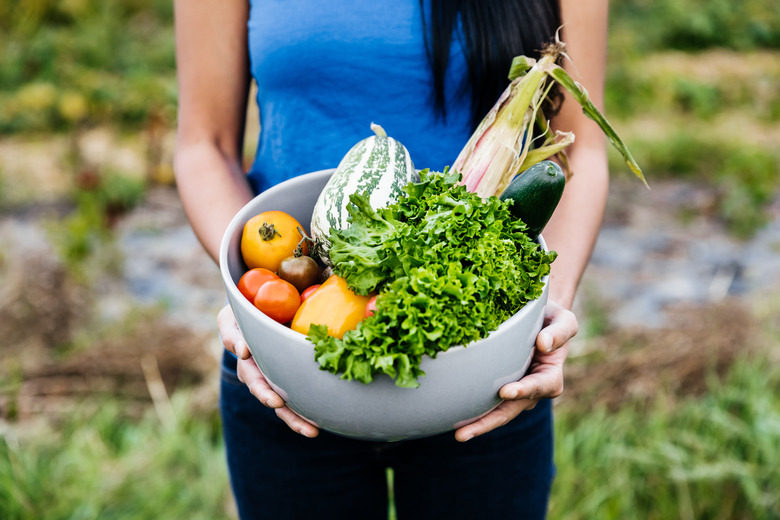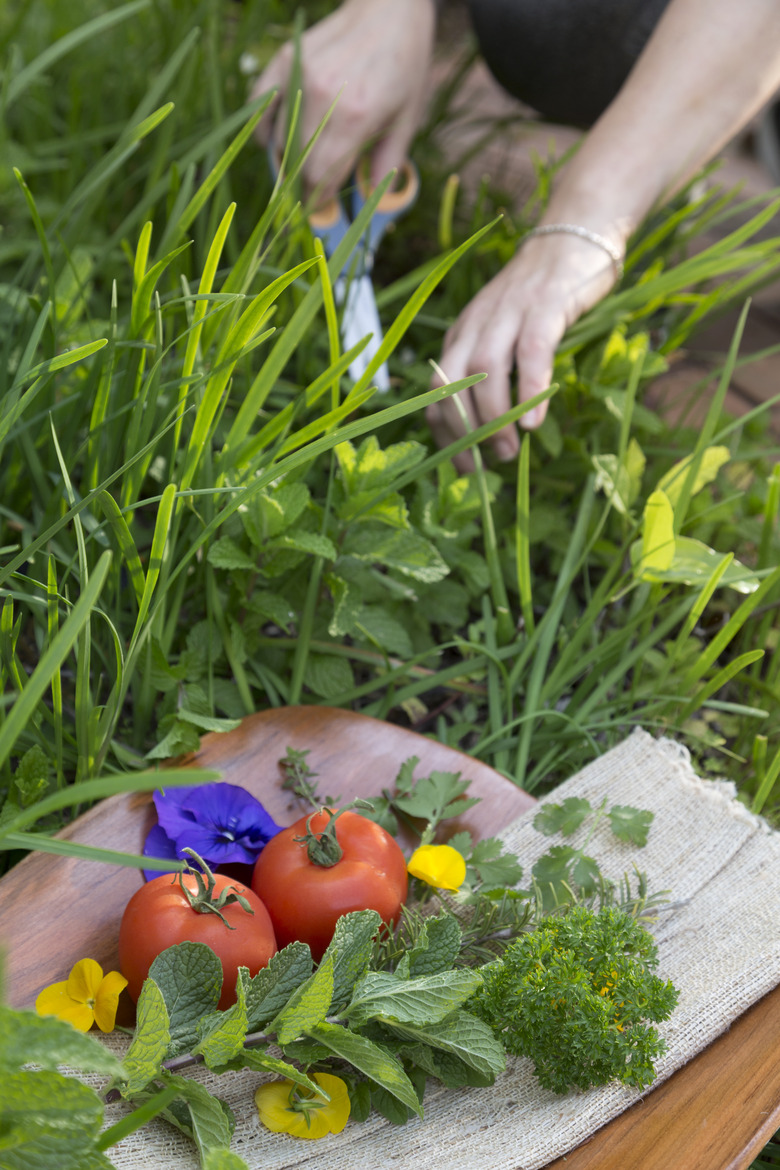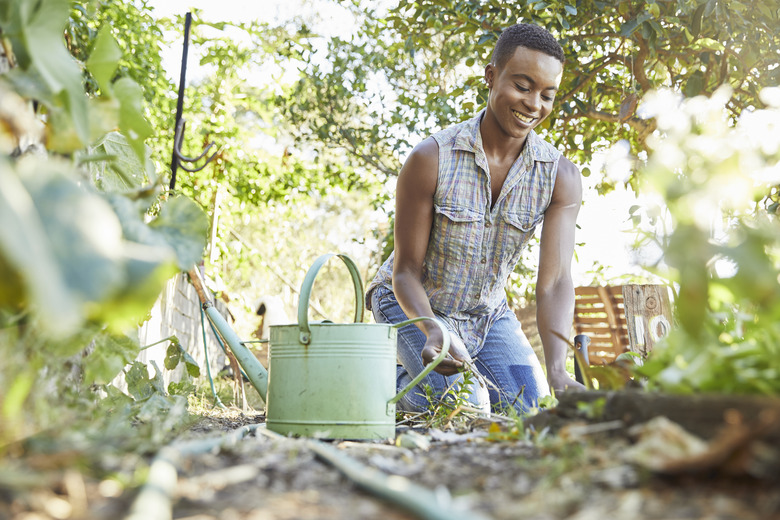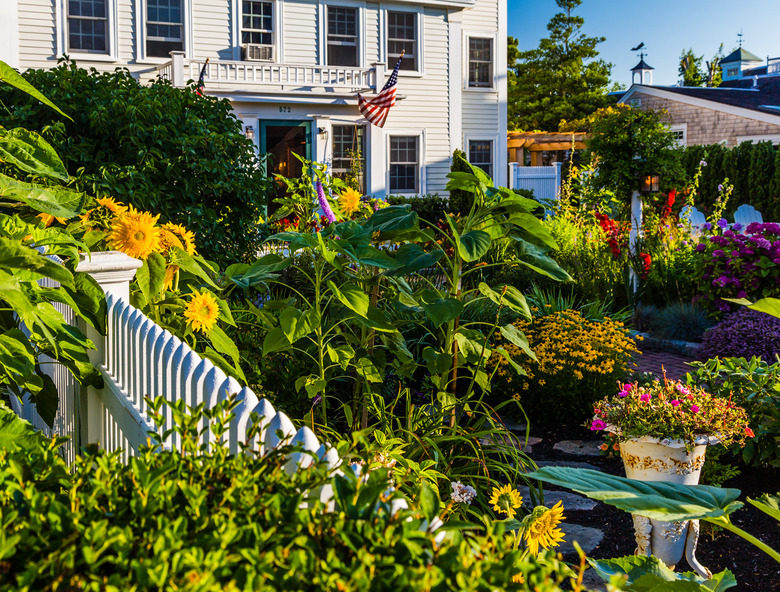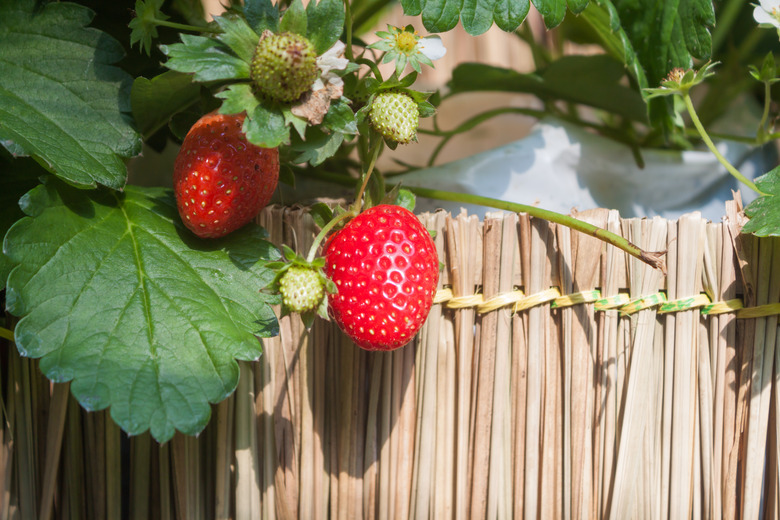Planting Vegetables In Flower Beds
At last vegetables and herbs can shake off their reputation as functional plants that belong out of sight in a backyard garden plot. Now a tomato plant not only provides fresh, healthy fruit but also adds beauty alongside existing shrubs and flowers, displaying its cheery red fruit for all to see. Foodscaping, or planting an edible landscape, is a growing trend among people who want to raise their own affordable fresh produce but have limited space and time that rules out a traditional vegetable garden. By integrating vegetables in an existing flower garden, people make the most of the land they have and reap a greater return on their investment. As in any home endeavor, success is achieved when both function and beauty come together to achieve the desired result.
Affordable Fresh Produce
Affordable Fresh Produce
Locally grown fruit and vegetables are superior in quality and taste because they're picked at their peak ripeness and promptly delivered to the consumer before nutrients are lost That's why consumers so often seek out local options at the grocery store or farmer's markets and enjoy farm-to-table restaurant dining. However, we pay more for top quality. If you raise your own produce, not only will you benefit from better quality and taste, but you'll also save money. According to the National Gardening Association, the average food garden yields a $500 return on investment.
So instead of spending money on annuals to add color to your flower bed, consider investing in vegetable seeds and plant plugs that will supply your table with homegrown fruits and vegetables.
Planning Considerations
Growing crop plants within an existing landscape requires a lower initial cost in preparing the soil and space, and the amount of time to maintain an established space should stay about the same. Also, you have more freedom in choosing a location that receives the most sunlight, whether it's in your front or backyard. As long as plantings respect the original landscape design, the beauty of your yard will continue to flourish. However, if you live in a home that's governed by neighborhood covenants or a homeowners association, you might want to consult a landscape professional to design your integrated plan so it will meet the standards prescribed for your situation.
Perhaps you do want to create a new garden bed to replace grass with edible plants or turn unused space into a beautiful, productive garden. The initial investment in time and money will be higher, but a new garden will allow you to accommodate more or larger plants. Be sure that you have easy access to a garden hose for watering, the soil conditions are amenable, and the area will receive full sun for at least half a day during the growing season. As you plan, remember that you don't have to grow all your produce. It might be best to start growing some favorite foods and then at the end of the growing season note how much time was required to control weeds, water the plants, harvest the produce, and clean up the garden at the end of the season. It can become an overwhelming effort rather than an enjoyable experience if you start with a scale that is too large.
How to Add Crop Plants to an Existing Landscape
How to Add Crop Plants to an Existing Landscape
Adding vegetables can be an easy process. Begin in the spring by cleaning up your existing landscape. Trim overgrown shrubs, pull weeds and clean up debris from last year's growth. Then evaluate how much space gets enough sunlight to grow food crops. Once you know exactly where you have space to add plants, decide what to plant based on the five principle fruits, vegetables, and herbs you eat regularly on a weekly basis. Then decide where and how many of each of those plants will grow best in your space. Prepare the soil by adding compost on top of the existing mulch. Directly sow small seeds into the soil, but purchase plant plugs for slow-growers such as tomatoes, peppers, and eggplants to get a head start on the growing season. Lightly mulch with a half-inch layer of material that matches the rest of your landscape.
Tip
Consider testing your soil with a county or state extension agent to see if it needs to be enriched. Determine the best fertilizer to use based on existing levels of nitrogen, phosphorus, and potassium.
Design Considerations
Design Considerations
To integrate traditional edibles into your overall landscape, make them work with the existing landscape, not against it.
- Avoid the traditional box or rectangular garden bed. Either add plants to the existing landscape or create beds in an interesting shape and then plant vegetables and flowers in groups to create an interesting design within the bed.
- Pay close attention to the height of full-grown plants so that the lowest plants are placed in front of taller ones. This will ensure that all plants receive adequate sunlight and make it easy to access the produce when it's ready to harvest.
- If you have a very large area, use vining plants, such as squashes, sweet potatoes, and pumpkins, as groundcover. (These plants are unwieldy in smaller spaces.)
- Coordinate the colors of flower blooms and foliage with the vegetable produce. That is, include bright blossoms with fiery-colored peppers so the groupings create a united mass of color.
- Include container gardens, especially if you want to control the spread of an aggressive plant such as mint, or bring in an herb such as rosemary to winter over indoors.
- Use decorative trellises, obelisks, or woody shrubs (hydrangeas, lilacs, spireas, or viburnum) instead of traditional cages and trellises to support peas, pole beans, and tomatoes.
- Include edibles along the edges of foundation plantings. Suitable plants include greens (lettuce, kale, and arugula), onions, garlic, parsley, strawberries, peppers, basil, and bush beans.
- Group tall plants together. One such grouping could include sunflowers, zinnias, corn, and sorghum.
What to Grow
What to Grow
Many gardeners include these tried and true edibles. Consider how much each plant will yield, and sow accordingly. If you find that you have an abundance of produce, you can always share with your friends.
- Greens: Plant seeds each week to spread out harvesting time, and when you harvest, pick leaves instead of the whole plant. Different varieties add color and texture a landscape or containers.
- Herbs: Garlic, onions, chives, and parsley are easy to grow and frequently used in the kitchen. Consider growing garlic, basil, rosemary, lavender, and mint to add flavor to food and keep pesky insects away. Petunias and marigolds are colorful flowers that can keep away mosquitos, squash bugs, tomato worms, and aphids.
- Tomatoes: There are many varieties to choose from, so consider their growth habits, maintenance requirements, and the size of the fruit and plant. Some tomato vines grow up to 7 or 8 feet tall.
- Beans: Bush or pole beans are easy to grow and provide a bountiful harvest.
- Peppers: These plants are great mixed in a landscape or containers. You may want to include both sweet and hot varieties. Consider all the various colors of peppers.
- Eggplants: Choose a compact variety that will add color without taking over garden space.
- Berries: Depending on the plant, berries make a good hedge (blueberries and raspberries) or border plant (strawberries). Berries also grow well in containers.
